The birds of Highdown Gardens: six brilliant birds (and other creatures) to spot at Highdown this winter
 Hello my name’s Claire and I’m a Craft Gardener at Highdown Gardens.
Hello my name’s Claire and I’m a Craft Gardener at Highdown Gardens.
Unsurprisingly, most people come to Highdown Gardens for the plants. Collected from all corners of the globe by Sir Frederick Stern over 58 years, these rare, chalk-tolerant specimens have been admired by Highdown’s many visitors since 1910. However, this unique chalk garden is also home to a wealth of other living treasures.
Since starting as a Craft Gardener at Highdown last year, I have been struck by the abundance and diversity of wildlife here. From sleepy slow worms sunbathing on the paths, to frenetic hummingbird hawk-moths zipping furiously through the Sensory Garden. Only last week we spotted a thirsty American mink skirting around the outside of the glasshouse in search of a drink, followed by a magnificent view of a sparrowhawk in the Lower Garden sitting calmly on the grass and glaring defiantly at us with his stunning yellow eyes.
A parched American mink visits Highdown’s glasshouse in search of a drink
Photo Alex New – copyright © 2023

On reflection, it’s little wonder that Highdown provides such a haven for wildlife. Nestled in a former chalk quarry in the South Downs National Park, enclosed by mature trees and large shrubs, the garden provides shelter from the elements, as well as food, water, and nest sites.
This summer in particular seems to have been a bumper one for butterflies and stag beetles. We were awash with butterfly-bejewelled buddlejas.
In the Lower Garden I was treated to regular sightings of spectacularly armoured stag beetles; the UK’s largest land beetle. Apparently the males will often ‘duel’ to win over a female using their impressive antler-like jaws (mandibles), similar to male deer locking antlers, hence the name ‘stag’ beetle. Sadly, these fascinating creatures are now rare and in decline across much of Europe due to habitat loss, so we are very lucky to have such a good population.
Adult male stag beetles are between 35 to 75mm long and are a common sight at Highdown in the summer
Photo by David Maher – copyright © 2023
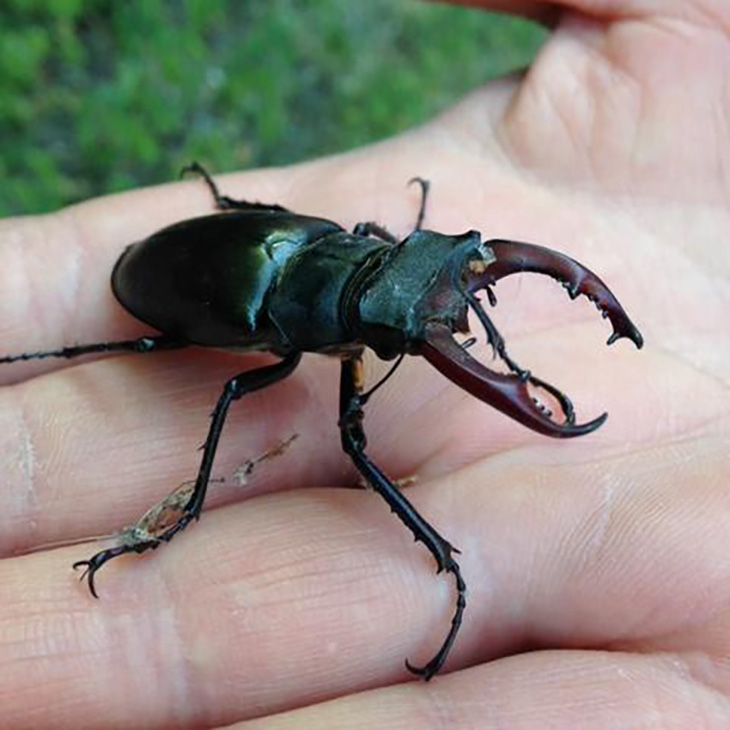
Female stag beetles are smaller than their male counterparts, at about 30 to 50mm long
Photo by David Maher – copyright © 2023
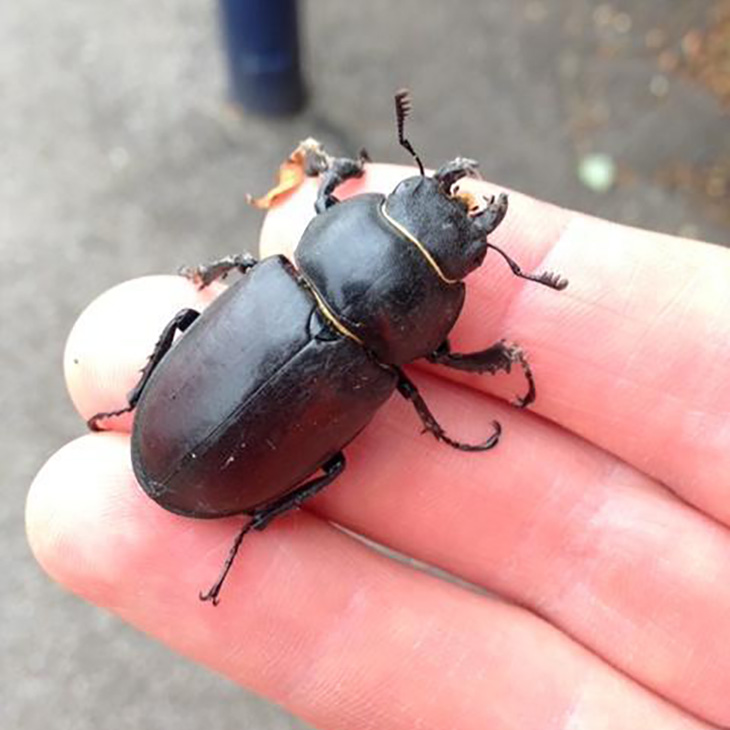
Six brilliant birds to spot at Highdown this winter
Of all Highdown’s Animalia my favourite has to be the birds. Pause quietly for just a moment and I guarantee one of our feathered residents will come to keep you company. At this time of year the most likely candidate will be a bold little robin intent on sharing your sandwich, but robins aren’t the only birds here at Highdown this Christmas.
A plucky robin on the lookout for a free lunch at Highdown
Photo by Tina Lighten-Duncan – copyright © 2022
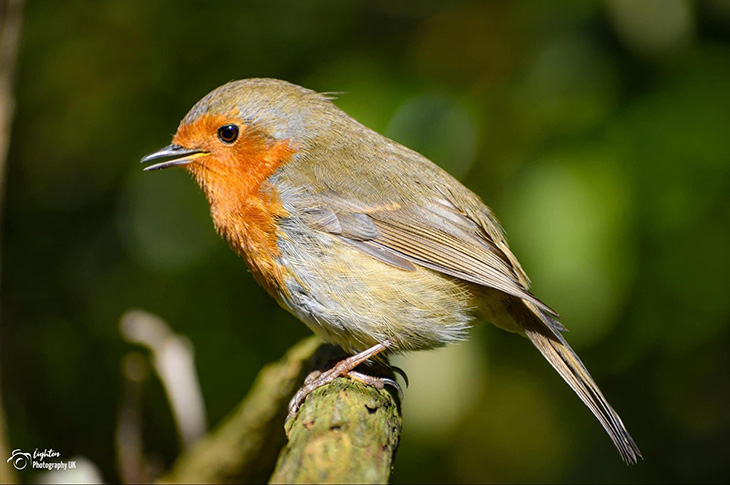
Winter is actually a great time for birdwatching. For a start, the leafless trees mean they’re much easier to spot. Smaller birds will often team-up together in large groups of mixed-species, giving you two species (or 3, or 4, or 5, or 6) for the price of one!
The cold weather is tough on birds and resources are scarce, so you will likely see them frantically foraging to build up their fat stores and keep warm. This, in turn, can prompt some bolder behaviour, especially from cheeky robins who will happily take free handouts from visitors.
The UK also attracts many migrant birds who will overwinter here before leaving again in the spring.
So which birds might you see during your winter walk at Highdown? Here are my top six to watch out for:
6. Fieldfare (Turdus pilaris)
A winter migrant to the UK, this plump thrush has a grey head with chestnut wings and back. They are social birds and are usually seen in flocks, although you will probably hear them before you see them; their loud, chuckling ‘chaker, chack, chack’ call is unmistakable.
Whilst in the UK they mainly feed on fallen fruit and berries, particularly yew, hawthorn, rowan, juniper, elder and holly. I have seen them gathered on the trees outside the Visitor Centre early in the morning, presumably discussing where best to get breakfast!
A winter visitor to the garden, fieldfares fly all the way from Scandinavia to feast on berries and fallen fruit in the UK (photo: Pixabay)
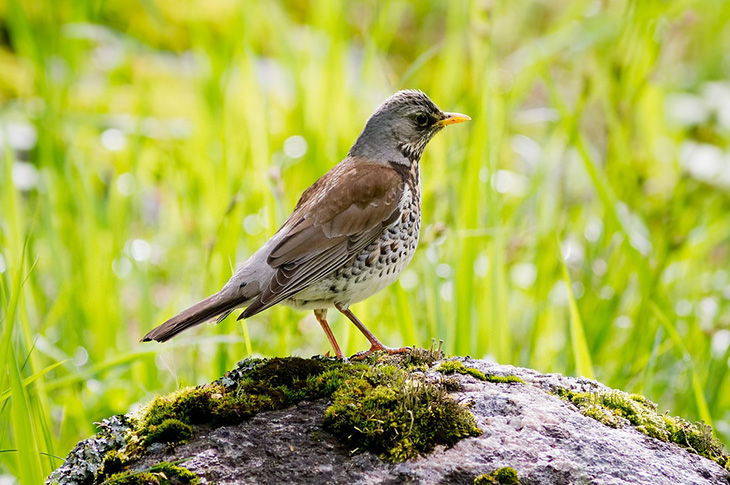
5. Jay (Garrulus glandarius)
The most dashing and well-dressed of the crow family, jays have pink plumage, a white rump, and a long black tail. Their heads have a small white crest, streaked and speckled with black which they raise in display or when excited. One of their most distinctive features is an electric blue flash of feathers adorning their black and white wings, but my absolute favourite attribute is their small, black moustache which – at the right angle – makes them look like a dapper, moustachioed, Victorian gentleman.
They are slightly smaller than a wood pigeon and are generally quite secretive woodland birds until autumn when they can be spotted ‘caching’ acorns in the ground ready to recover in winter when food becomes more scarce. Despite jay’s being highly-intelligent not all acorns are found again, meaning many are left to grow into oak trees – in fact, jay’s are often credited with the spread of oak trees following the last Ice Age.
We have a fantastic population of jay’s here at Highdown, particularly down in the Performance Area. At this time of year they can be spotted hopping around on the ground stashing and digging up acorns, hotly pursued by the grey squirrels. Listen out for their incredibly loud, harsh, screeching call eerily echoing through the trees.
A handsome Highdown jay surveys the area, planning where to stash his next acorn
Photo by Tina Lighten-Duncan – copyright © 2022
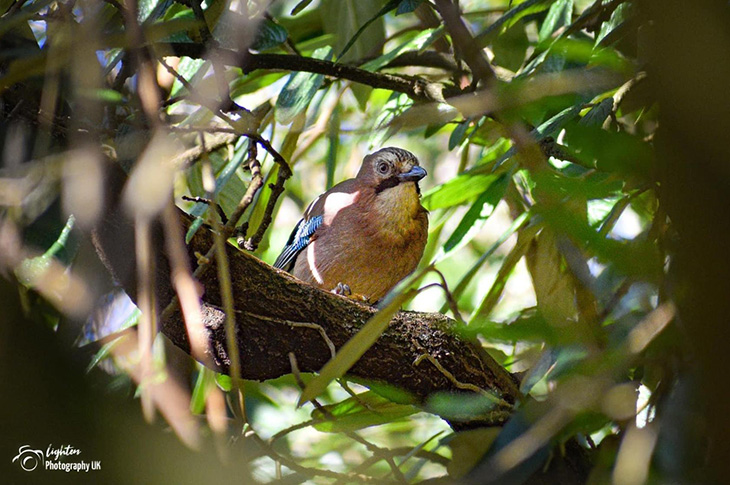
4. Goldcrest (Regulus regulus)
The UK’s smallest bird weighing-in at just 5g – the equivalent of a 20p piece! This tiny, round, bundle of cuteness is a dull green-grey with an off-white belly. Females have a yellow stripe on their heads – in males this stripe is orange – bordered with black. They have a very high-pitched ‘tsee’ call which will help you to locate them, and they can sometimes be heard singing in winter in a rolling tee-lee-de’, ‘tee-lee-de’.
Goldcrests are hyperactive little birds, flitting around quickly in trees and thick bushes catching insects and spiders. In winter, you will often see them among flocks of other small birds such as tits and warblers as they forage for food.
I’ve had some lovely views of goldcrests by the entrance to the Millennium Garden, and also down in the Chalk Pit amidst the mature trees and shrubs that adorn the cliff face.
With its splendid golden crown, the goldcrest is known as the ‘king of birds’ in European folklore. It also has the Latin name ‘Regulus regulus’ meaning ‘petty king’ or ‘prince’ (photo: Pixabay)
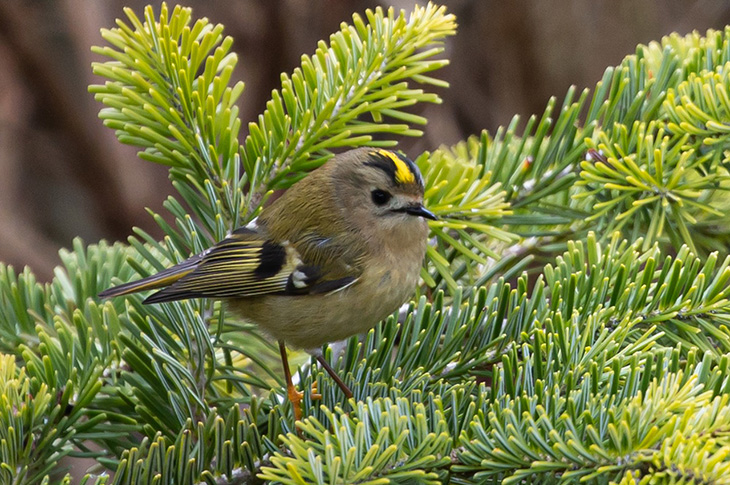
3. Wren (Troglodytes troglodytes)
Giving the goldcrest a run for its money in the ‘teeny’ stakes, this little, brown bird is a tiny ball of pure energy. Wrens weigh about 10g – the same as a £1 coin – and although they aren’t Britain’s smallest bird they are the shortest, measuring between 6 to 20cm. Their petite stature may explain why they are so keen to snuggle-up together in winter, establishing communal roosts at night to reduce heat loss. Most roosts usually involve a handful of individuals, but there are records of up to 63 using a single nest box and almost 100 in an attic of a house!
The wren may be small, but its voice is mighty! Considering its diminutive size it has a staggeringly loud song – the loudest in proportion to its size of any British bird – comprising a series of high-pitched, cascading notes, mixed with little ‘trills’. It also has a very distinctive, rattling ‘tic-tic’ call. Its small tail is often stuck up vertically making it look almost round in shape as it relentlessly searches for insects and other invertebrates, usually low to the ground in bushes and vegetation.
Wrens are a common (albeit fleeting) sight in the Lower Garden, moving mouse-like through the undergrowth in search of their next meal.
The UK’s most common breeding bird, the tiny wren can be spotted whizzing around in the undergrowth in search of insects (photo: Pixabay)
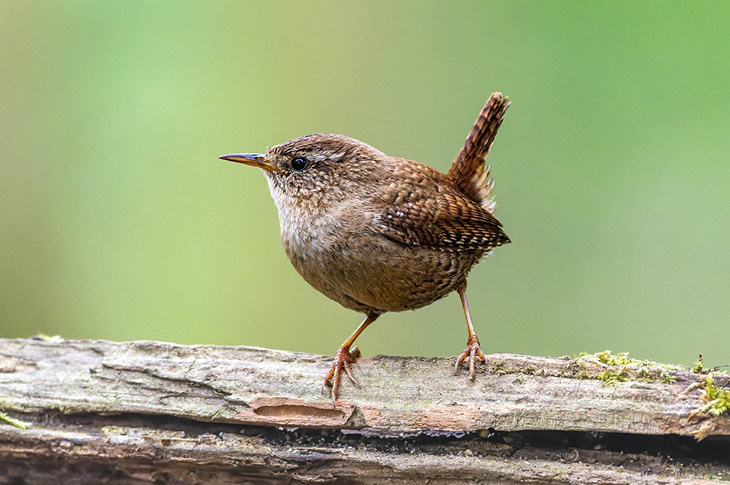
2. Long-tailed tit (Aegithalos caudatus)
One of my all-time favourite birds, the tiny long-tailed tit is a real cutie with its attractive pinky blush and black and white striped head. Measuring 14cm long, a whopping 9cm of this is its distinctive long tail.
Long-tailed tits are highly sociable and are usually seen in small family groups of around 20 birds roving rapidly through the treetops and hedgerows. These little fluffy troops are particularly vocal, making a high-pitched ‘see, see, see’ contact call to one another, sometimes interspersed with a ‘thrup’ sound. Their noisy behaviour, characteristic tail, and bouncy, undulating flight make them easy to distinguish from other small birds.
Breeding in March and April, long-tailed tit nests are just as adorable as their occupants. Intricately built from moss, lichen, and cobwebs, these cosy domed structures are carefully lined with up to 1,500 feathers and gently expand as the young grow inside.
I have seen long-tailed tits in nearly every part of the garden, but since they favour woodland habitat your best bet is the entrance to the Beech Walk, or the Lower Garden and Performance Area. Here they are frequently seen in flocks moving restlessly through the trees, often joined by other small foraging birds performing treetop acrobatics.
Highdown’s long-tailed tits can often be spotted roaming in small flocks at the entrance to the Beech Walk or moving excitedly through the Lower Garden
Photo by Tina Lighten-Duncan – copyright © 2022
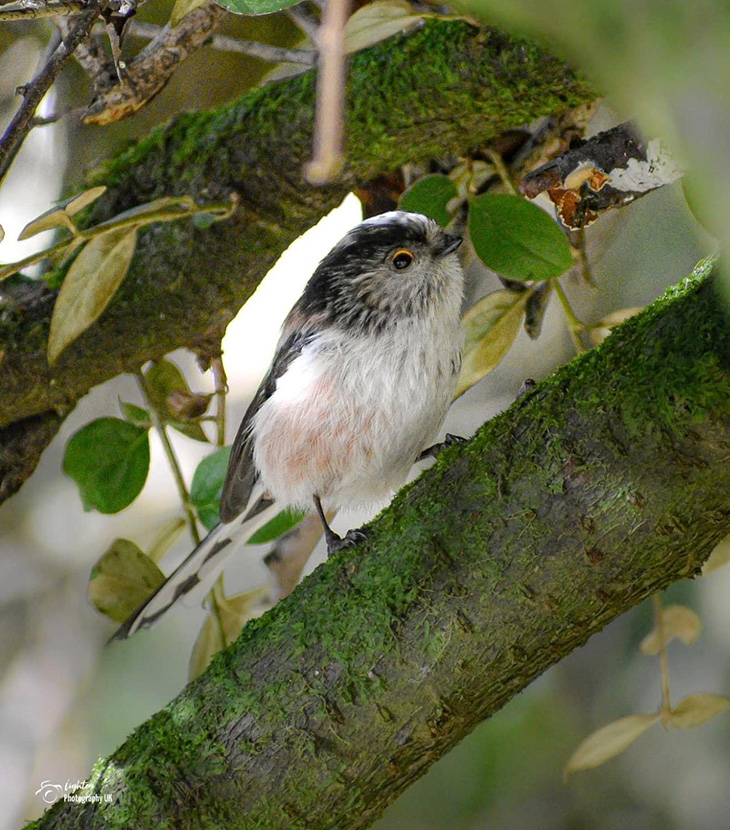
1. Robin (Erithacus rubecula)
Plucky and companionable, it’s little wonder this cheeky chap is the UK’s most beloved bird. The size of a sparrow, robins are easy to spot with their signature orangey-red breast and melodious song.
Robins sing throughout much of the year and their song takes two distinct forms; just after autumn it is melancholy and wistful, but from December onwards it becomes faster, more powerful and energetic. Robins also have an urgent ‘tic, tic’ and high-pitched ‘tsweee’ call which they use when alarmed or agitated. They are one of the first birds to join the dawn chorus in the morning and one of the last to stop singing in the evening, often continuing their sweet serenade long into the night if there are street lights nearby.
Despite their friendly nature they are actually fiercely territorial and quick to drive off intruders. In summer, males and females (who look identical) will hold territories together, but in winter this is done alone. The robin’s distinctive red breast and vigorous song are actually tools used to defend their patch, and you will often see them singing loudly from a conspicuous perch to this end.
Highdown is famed for its friendly little robins who are found in every corner of the garden. They can be seen merrily hopping around behind one of the gardeners in eager anticipation of a juicy earthworm, or cosying up to visitors on a bench – particularly if they’re eating lunch. If you’re lucky (and prepared to share your sandwich), then some of the braver robins may even perch on your hand. I am rarely without a robin for company in the Lower Garden and every encounter lifts my heart and brings me joy.
Highdown’s iconic robins are remarkably tame and beloved by all
Photo by Tina Lighten-Duncan – copyright © 2022
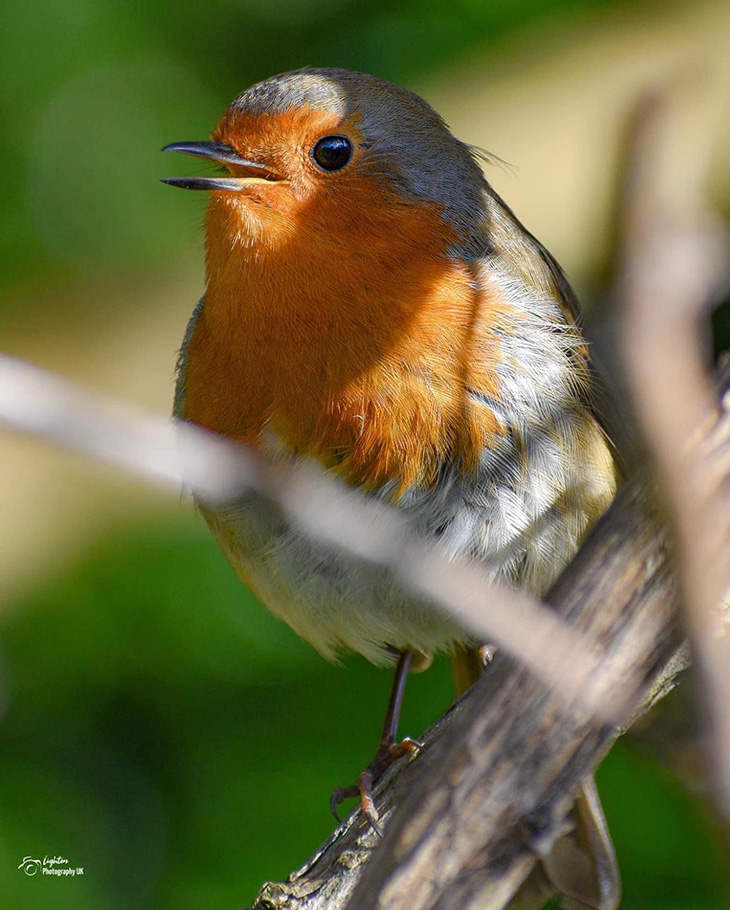
So what are you waiting for? Pull on your wellies, grab your binoculars and get down to Highdown for some wonderful winter bird watching … oh, and the plants are pretty good too.
Photos by Tina Lighten-Duncan – copyright © 2022
Instagram.com – tina_lighten
Facebook.com – Lighten Photography UK